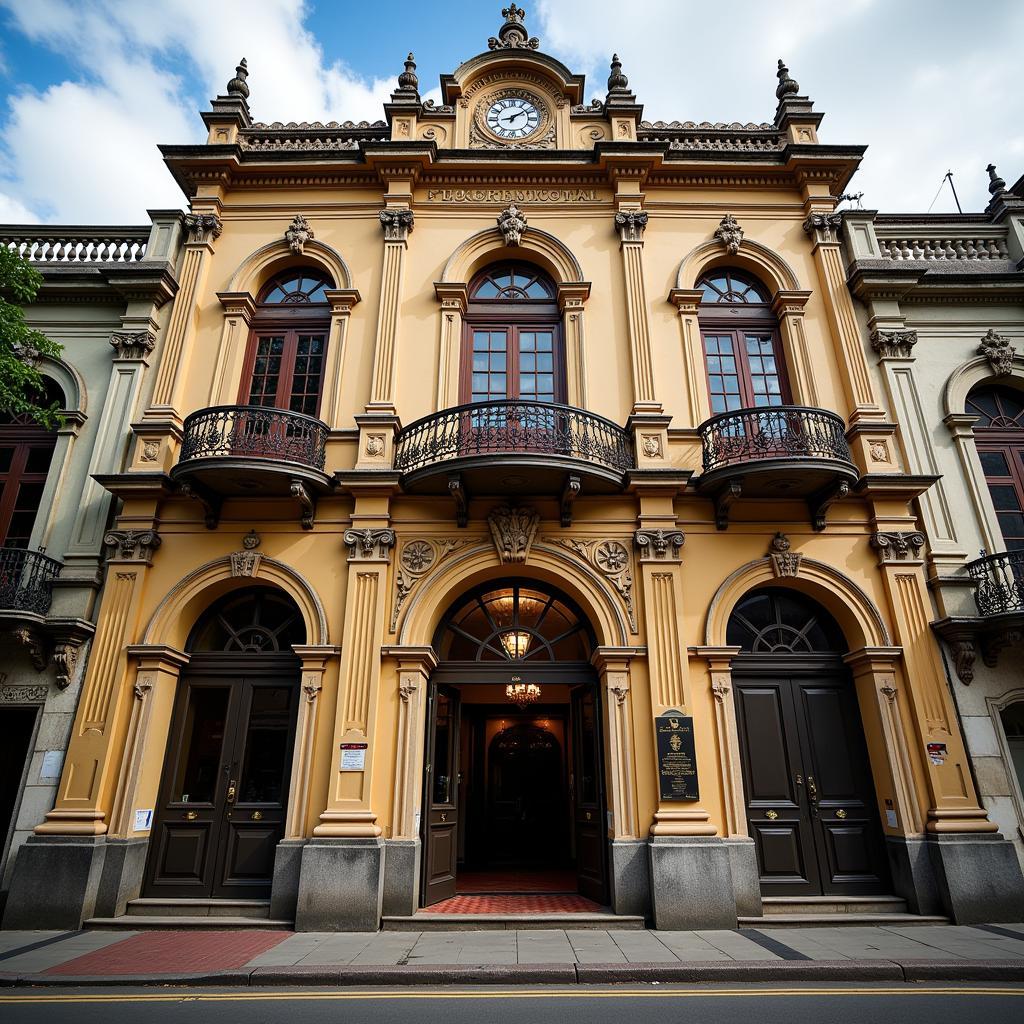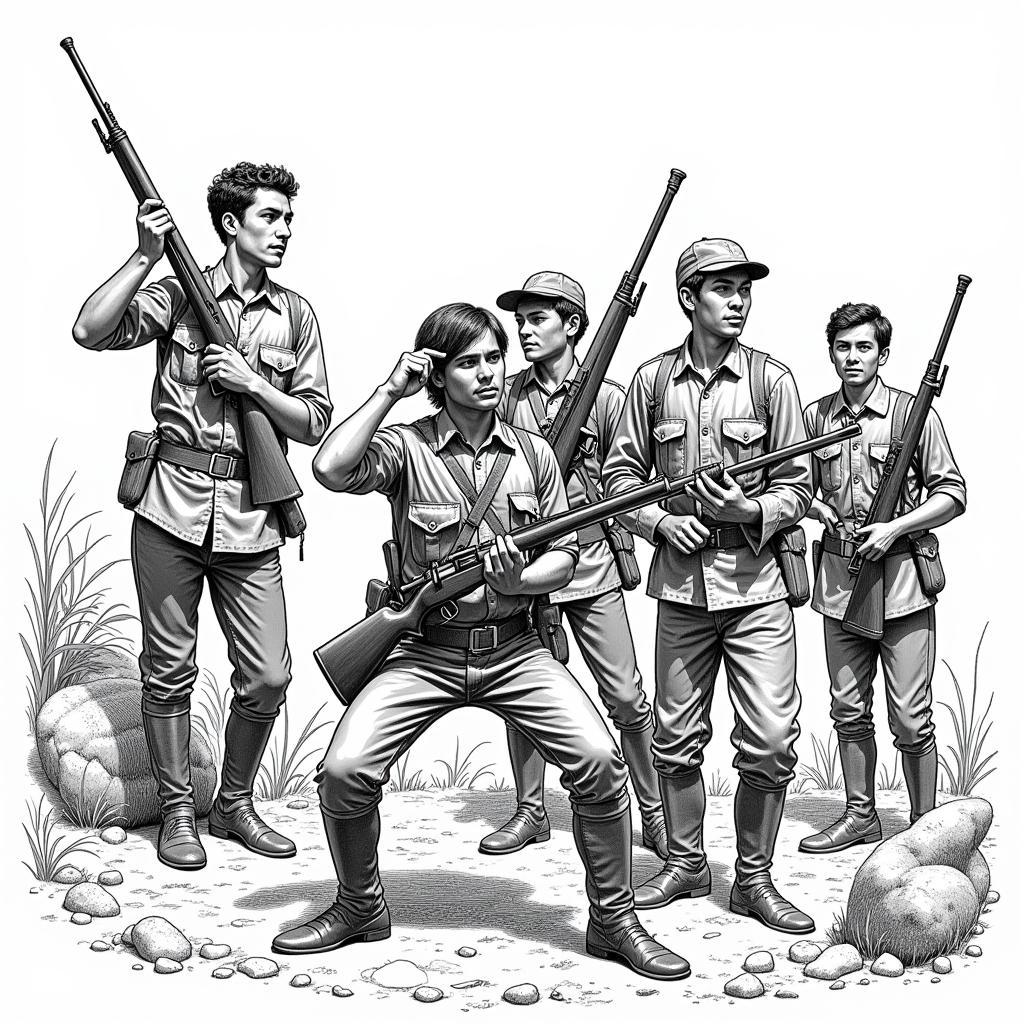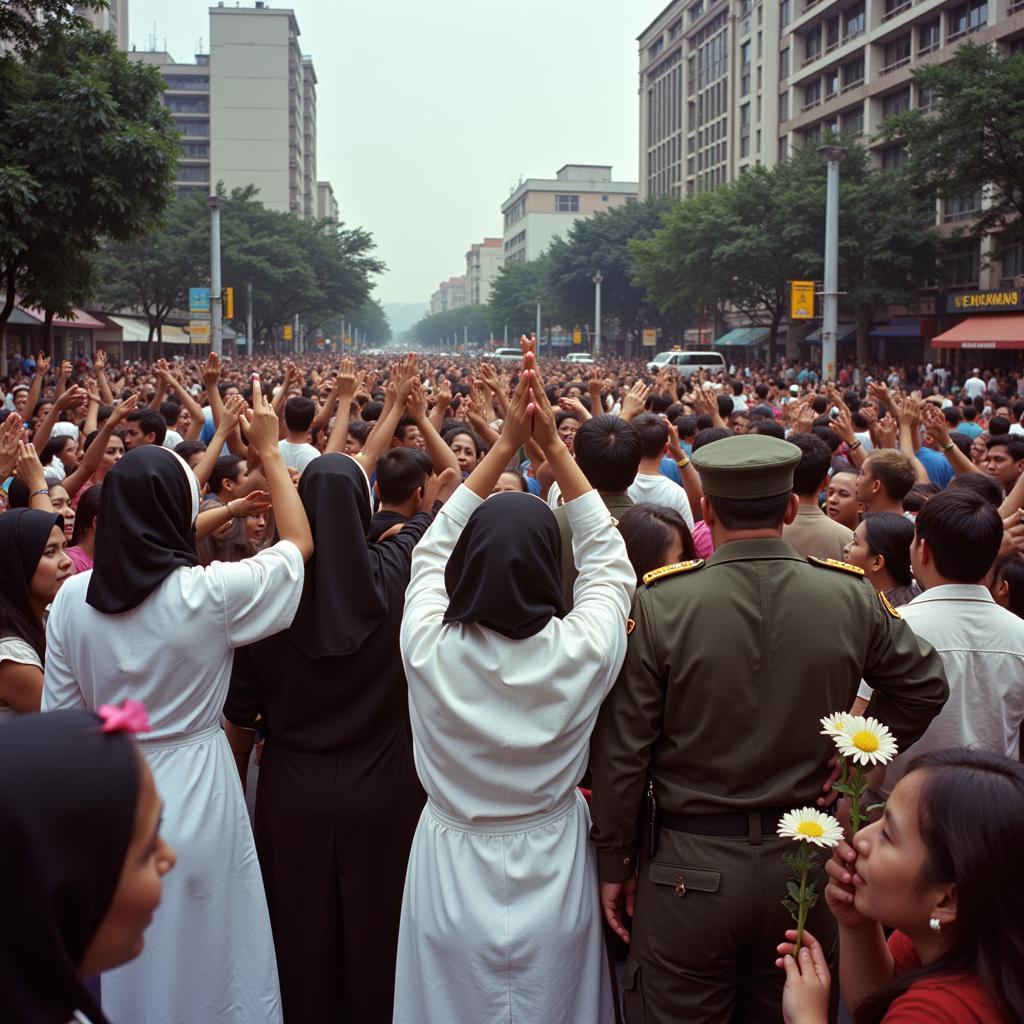The Philippines, an archipelago nation with a rich history and vibrant culture, has experienced periods of both great upheaval and remarkable resilience. The phrase “Philippine Society And Revolution” speaks to the deep-seated desire for freedom and self-determination that runs through the country’s narrative. From Spanish colonialism to American rule, the Filipino people have repeatedly risen to fight for their rights and shape their destiny. This struggle for autonomy has profoundly shaped the nation’s social fabric, fostering a spirit of unity, resistance, and ultimately, hope.
A Tapestry of Influences: Shaping Philippine Society
To understand the complexities of Philippine society and revolution, one must delve into the historical currents that have shaped its identity. Centuries of colonial rule, first under Spain and later the United States, have left an indelible mark. The introduction of Christianity, the imposition of Western political systems, and the influx of foreign cultures have all contributed to the unique blend that characterizes Filipino society today.
 Spanish Colonial Architecture in Manila
Spanish Colonial Architecture in Manila
Yet, even within this colonial framework, indigenous traditions and values persevered. The concept of “bayanihan,” or community cooperation, remained deeply ingrained, fostering a strong sense of collective responsibility. Family ties, respect for elders, and a strong work ethic are all hallmarks of Filipino culture, passed down through generations and serving as anchors in times of change.
The Seeds of Revolution: From Reform to Armed Struggle
The late 19th century witnessed a burgeoning nationalist movement in the Philippines. Educated Filipinos, exposed to Enlightenment ideals and inspired by revolutions abroad, began to question Spanish rule. Figures like Jose Rizal, a writer and national hero, advocated for reform through his powerful critiques of colonial injustices. His writings, laced with satire and social commentary, ignited a sense of national consciousness among Filipinos.
However, peaceful calls for change were met with repression, pushing the nation toward armed struggle. The Philippine Revolution of 1896, led by figures like Andres Bonifacio and Emilio Aguinaldo, marked a turning point. It showcased the Filipino people’s willingness to fight and die for their freedom, solidifying their place in history as a nation unafraid to challenge oppression.
 Filipino Revolutionaries of 1896
Filipino Revolutionaries of 1896
The American Era and the Evolution of Philippine Society
Despite the victory against Spain, the Philippines faced a new colonizer: the United States. The Philippine-American War, a brutal conflict lasting from 1899 to 1902, resulted in significant loss of life and further shaped the trajectory of Philippine society. While the US introduced advancements in education and infrastructure, their presence also fueled resentment and a continued desire for self-governance.
The 20th century witnessed the Philippines grappling with the legacy of colonialism while navigating the complexities of a globalized world. The nation gained independence from the US in 1946, but the road ahead was fraught with challenges, including political instability, economic disparities, and social unrest.
Revolution in the Modern Era: From Dictatorship to People Power
The latter part of the 20th century saw the Philippines confronting another form of oppression: dictatorship. The regime of Ferdinand Marcos, marked by corruption and human rights abuses, sparked widespread resistance. The People Power Revolution of 1986, a nonviolent uprising that captured global attention, demonstrated the unwavering spirit of the Filipino people and their commitment to democracy.
 People Power Revolution of 1986
People Power Revolution of 1986
Philippine Society Today: Challenges and Opportunities
Today, the Philippines stands at a crossroads. The nation has made significant strides in economic growth and poverty reduction, yet challenges remain. Corruption, inequality, and social injustices continue to plague its people. The legacy of colonialism and authoritarianism still casts a shadow.
However, amidst these challenges lies an undeniable sense of hope and resilience. Filipinos are known for their warmth, hospitality, and unwavering optimism. The spirit of “bayanihan” remains strong, evident in the way communities come together to support one another in times of need.
Conclusion: A Future Forged in Unity
The story of Philippine society and revolution is one of constant evolution, a testament to the enduring human spirit in the face of adversity. The quest for a just and equitable society continues, fueled by the lessons of the past and the aspirations of future generations. By embracing their history, acknowledging their challenges, and working together, the Filipino people can continue to shape a brighter future – one where peace, justice, and prosperity prevail.